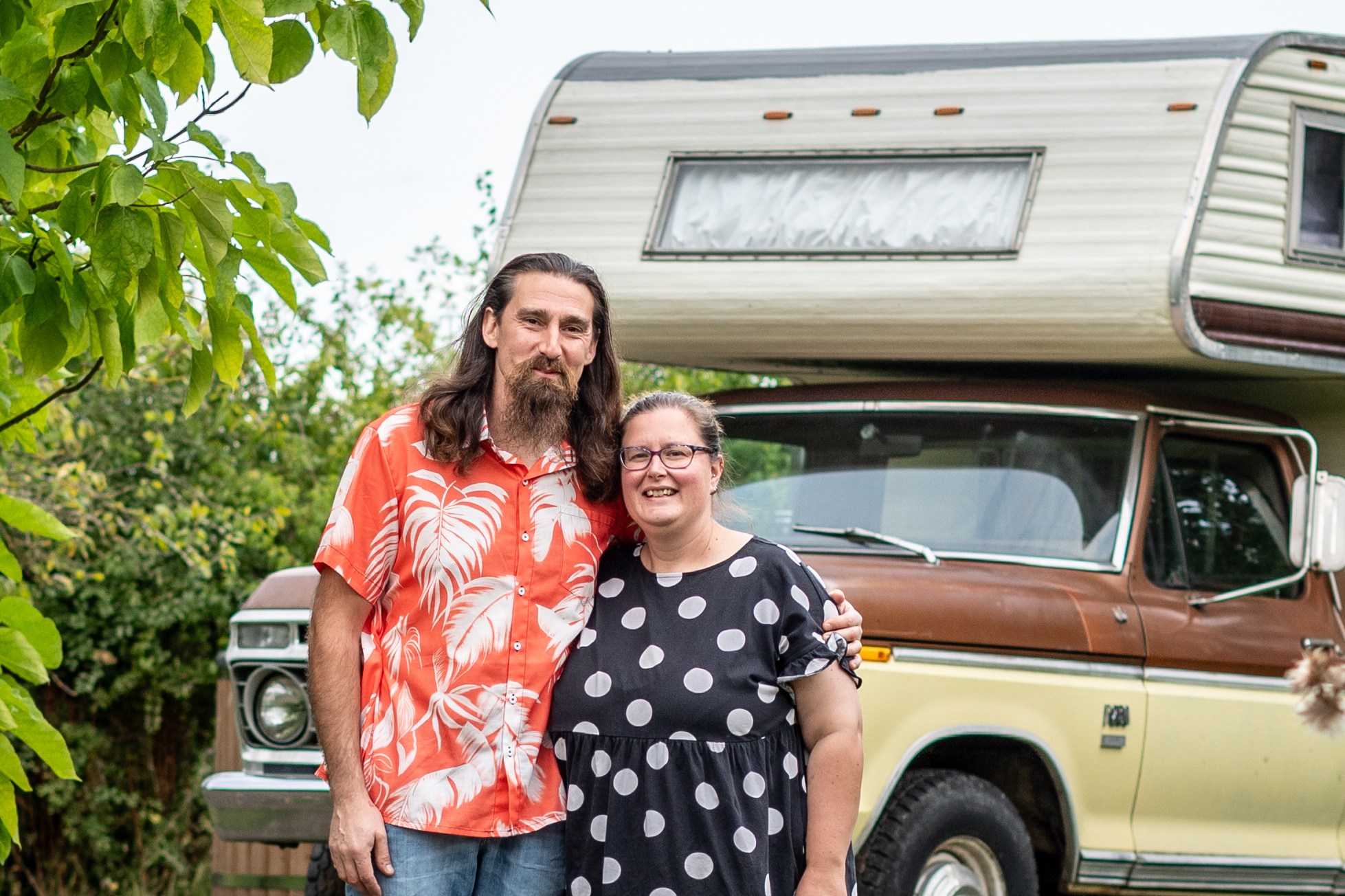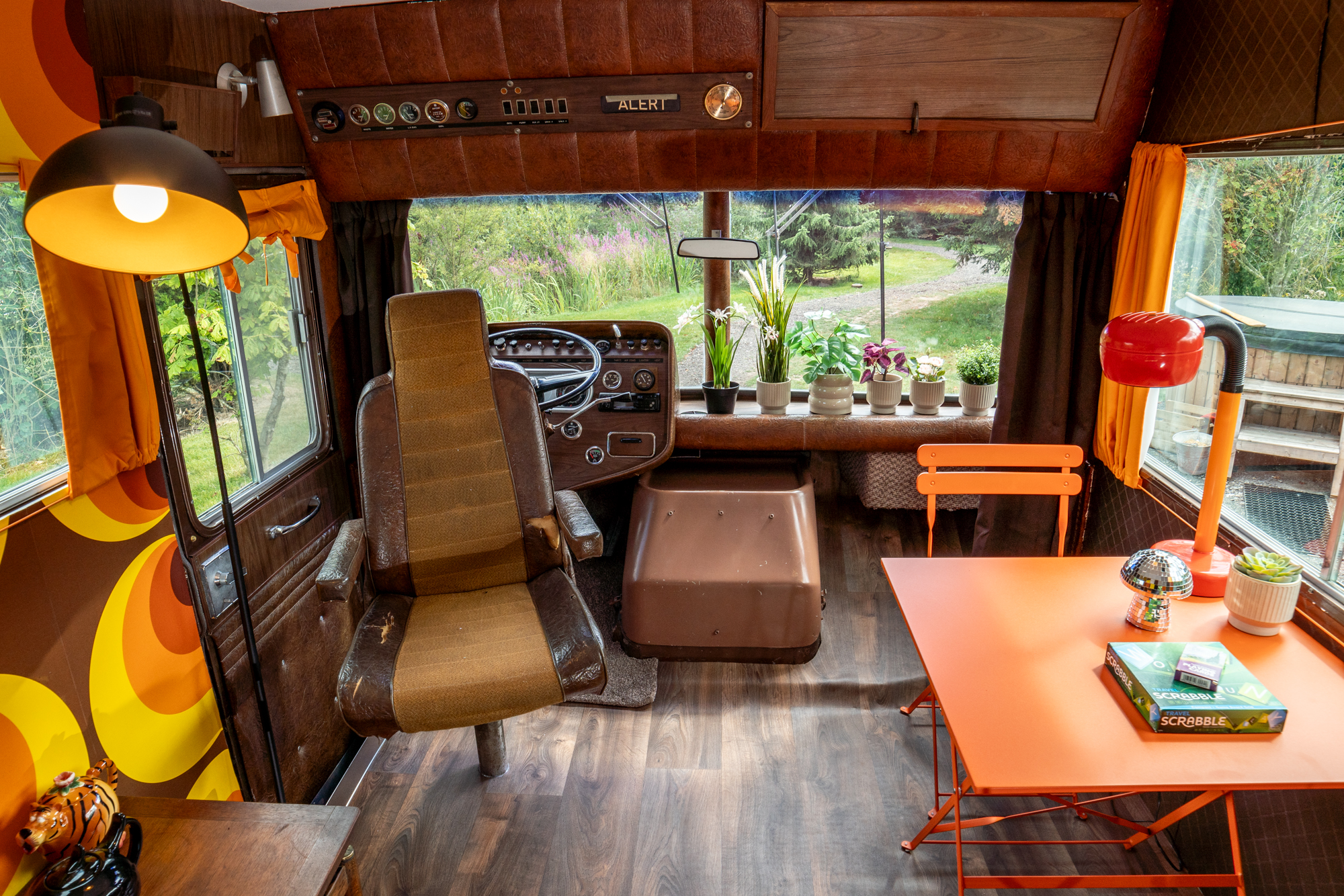When Alex Leiserach and his wife moved from Lancing in West Sussex to a farmhouse in the Lincolnshire countryside, they knew it would be a big life change. What they did not expect was to travel back in time to when web connections were so slow that pages would appear to download pixel by pixel, like a slow-motion waterfall.
“It was like the good old days of dial-up internet,” said the 42-year-old. “If my wife and I both wanted to send an email, one of us would have to wait.”
He looked at an alternative to the old copper telephone line that ran to the property, but the promised fibre connection under Project Gigabit — the government’s £5 billion plan, launched in April 2021, to connect 99 per cent of British households to broadband internet — was years away.

Broadband internet at Alex and Louise Leiserach’s glamping site is powered by Starlink
THELAYBYLINCS.CO.UK

So instead he joined the customer ranks of Starlink, the space-based internet business of Elon Musk’s $350 billion (£270 billion) rocket company SpaceX. For £75 per month (and £299 for the dish), Leiserach gets enough bandwidth beamed from satellites orbiting 340 miles above the Earth’s surface to run The Layby Lincs, the glamping business he and his wife have set up on their property.
“There could potentially be our five units in the garden, plus us, streaming video at the same time — and we’ve never noticed anything buffer,” he said. “We wouldn’t be able to function as a business without [Starlink]. We had to build a website. We have to run social media channels. It’s really important.”
From medieval castles to deep-sea fishing
Stories like this illuminate one of the most extraordinary business stories unfolding in the world today. With Starlink, Musk is rapidly building a new layer of global infrastructure that offers an alternative to the messy traditional approach: digging up roads and laying thousands of miles of fibre-optic cable.

Satellites, seen in a long-exposure photograph, now fill the night sky, with SpaceX adding about 12 per rocket launch
ALAN DYER/GETTY IMAGES
Instead, through SpaceX he has launched nearly 9,000 internet-beaming satellites into orbit, and these have opened up the prospect of bringing online the 2 billion-plus people globally who, the World Economic Forum estimates, are still without internet access.
Starlink this month hit 8 million paying customers, up nearly fourfold from the 2.3 million it had at the start of 2024. Sales last year leapt to an estimated $7.7 billion, surpassing the fees it collects from governments and companies that pay for a ride on SpaceX rockets.
As its launch cadence grows — SpaceX now fires a rocket into orbit roughly every other day — so too does Starlink’s constellation. SpaceX adds about 12 satellites per launch, filling out a network that provides internet access almost anywhere — from the turrets of medieval castles in England to deep-sea fishing vessels in the North Pacific to, as of next year, the entire fleet of British Airways passenger jets.
Jonathan McDonnell, an astronomer at the Harvard-Smithsonian Center for Astrophysics in Massachusetts, said: “Starlink is starting to deliver on [Musk’s] promise of ubiquitous broadband internet for everyone.”
Steve Durkin, founder of Rutland Broadband, specialises in installing Starlink systems for farmers and other customers who have been waiting years for the rural broadband initiatives promised by successive governments. Ofcom, the UK industry regulator, estimates that 2 per cent of Britons over the age of 16 — 1.3 million people — do not have internet access.
Durkin said: “The rural community absolutely needs internet connectivity. Farmers all have smart farms. Pretty much every piece of farm equipment these days is a connected device, and they run sophisticated agronomy systems, field analysis and all the science behind optimising crops. There’s no good alternative … Starlink has been a game-changer.”
The idea for Starlink began with a crazy idea hatched in Musk’s mind. Famously obsessed with making humans “interplanetary” by colonising Mars, he recycled $100 million that he made from the sale of PayPal — the online payment company he co-founded and offloaded to eBay in 2002 — to design, from scratch, a reusable rocket that could theoretically be orders of magnitude cheaper than, say, the Space Shuttle or other rocket systems in use at the time.
• Why Elon Musk’s plan to put a million people on Mars is doomed to fail

Starlink began with what seemed a crazy idea hatched by Elon Musk
MICHAEL GONZALEZ/GETTY IMAGES
It was, on the face of it, an insane idea. Governments, not private companies, built rockets — and certainly not companies run by someone with zero experience in spaceflight.
“We started off with just a few people who really didn’t know how to make rockets,” Musk once said of the early days of SpaceX. “The reason I ended up being the chief engineer or chief designer was not because I wanted to; it was because I couldn’t hire anyone. Nobody good would join. So I ended up being that by default.”
SpaceX’s first three rockets failed, pushing the company to the edge of bankruptcy. “Fortunately, the fourth launch — which was the last money we had for Falcon 1 — worked. Or that would have been it for SpaceX.”
Today, the Falcon 9 — the ninth iteration of that first rocket — is the workhorse of the SpaceX fleet. Every two and a half days, one of them blasts into the sky from either Florida or California, ferrying all manner of hardware to space, from satellites and GPS kit to supplies for Nasa’s International Space Station.
• SpaceX success as Polaris Dawn becomes highest orbit ever flown
The key breakthrough was making the booster reusable. Before SpaceX, rockets were almost artisanal. Each booster was made to deliver a single payload to orbit. It would then detach, crash into the ocean and never be seen again. The ability to not just control a descent, but direct the rocket to land with pinpoint accuracy, was deemed simply too hard.
SpaceX, after many misfires, has mastered the technology.

A SpaceX rocket nails a precision landing in August
The upshot is that it has brought down launch costs by a factor of ten, allowing it to grab most of the market, while also spawning a generation of start-ups whose business models are enabled by the suddenly cheap cost of getting their equipment into orbit.
The other reason for satellite internet’s boom is the level of orbit. Traditionally, providers of the technology operated from much further away — 22,000 miles above the Earth — resulting in a lag time that limited its utility. Signals from Starlink, operating from “low Earth orbit” of about 340 miles, have far shorter distances to travel, resulting in speeds akin to terrestrial internet.
The satellite boom
A decade ago, about 1,200 working satellites orbited the Earth; today there are 12,000, most of which are Musk’s. If the 54-year-old billionaire and his rivals, including Amazon Leo, the online retailer’s nascent satellite internet service, deliver on their plans, there could be more than 100,000 satellites circling the globe by 2035.
• Jeff Bezos v Elon Musk: who is winning the space race?
The implications could be profound. Not only would it mean potentially lighting up the last dark internet corners of the planet, it would also concentrate even more power in the hands of the world’s richest man. A software fault in September briefly cut service across the network — from the front line of the Russia-Ukraine war, where Kyiv’s military rely on Starlink to conduct operations, to Leiserach’s Lincolnshire business — highlighting what a critical lever it has become on the world stage.

Ukrainians in Kherson connect to wi-fi with a Starlink station in November 2022
AFP
The sheer amount of kit being put into orbit also increases the risk of catastrophe. Satellites circle the globe at 17,000 miles per hour. A collision could set off a chain reaction that sends shrapnel hurtling through space, destroying other satellites and rendering swathes of orbit unusable.
This could affect everything from basic internet services to bank transactions to climate-change monitoring. McDonnell at the Harvard-Smithsonian Center for Astrophysics said: “The Earth economy is now strongly entangled with the space economy.”
SpaceX and its rivals regularly “de-orbit” satellites, lowering them at the end of their useful life so they are incinerated by the atmosphere. “We could see ten to 20 satellites re-entering each day, and each of these satellites is like half a tonne,” McDonnell said. “So you’re adding many tonnes of metal a day, in multiple forms, to the upper atmosphere. We know that will have an effect on atmospheric chemistry.”

A computer-generated image of space junk in orbit around Earth
For most, however, the ability to tap into high-speed internet far outweighs concerns about space junk hurtling 340 miles over their heads. When Simon Burton, 66, a retired tech worker, found a home he loved in the West Country village of Kingsdown, the first thing he did was test the speed of the existing service. It was bad: 21 megabits per second (Mbps), about a 20th of what he had become accustomed to when living in Devon.
He asked BT Openreach when it planned to lay fibre to the village, but there were, apparently, no plans for the next 12 months. This was particularly galling because he was so close to Bath, a tourist destination and university town wired with high-speed internet.

Simon Burton turned to Starlink when high-speed internet proved elusive in his village near Bath
COLLECT
“We can see Bath out the window, but there is no fibre in the village,” he said. “I’ve been a BT customer all my life, so I have massive loyalty. But I didn’t want to go from 950 Mbps to 21. The obvious answer was Starlink.”
Yet even Starlink’s most loyal customers are wary of being so reliant on a company controlled by Musk, whose behaviour has become increasingly erratic in recent years.
Leiserach said: “He seems to be very flighty. He can change his mind on things very quickly. You don’t want it to be the only option because really, you’re at Starlink’s mercy. No one likes a monopoly.”
Right now, however, it is the only option he’s got.

